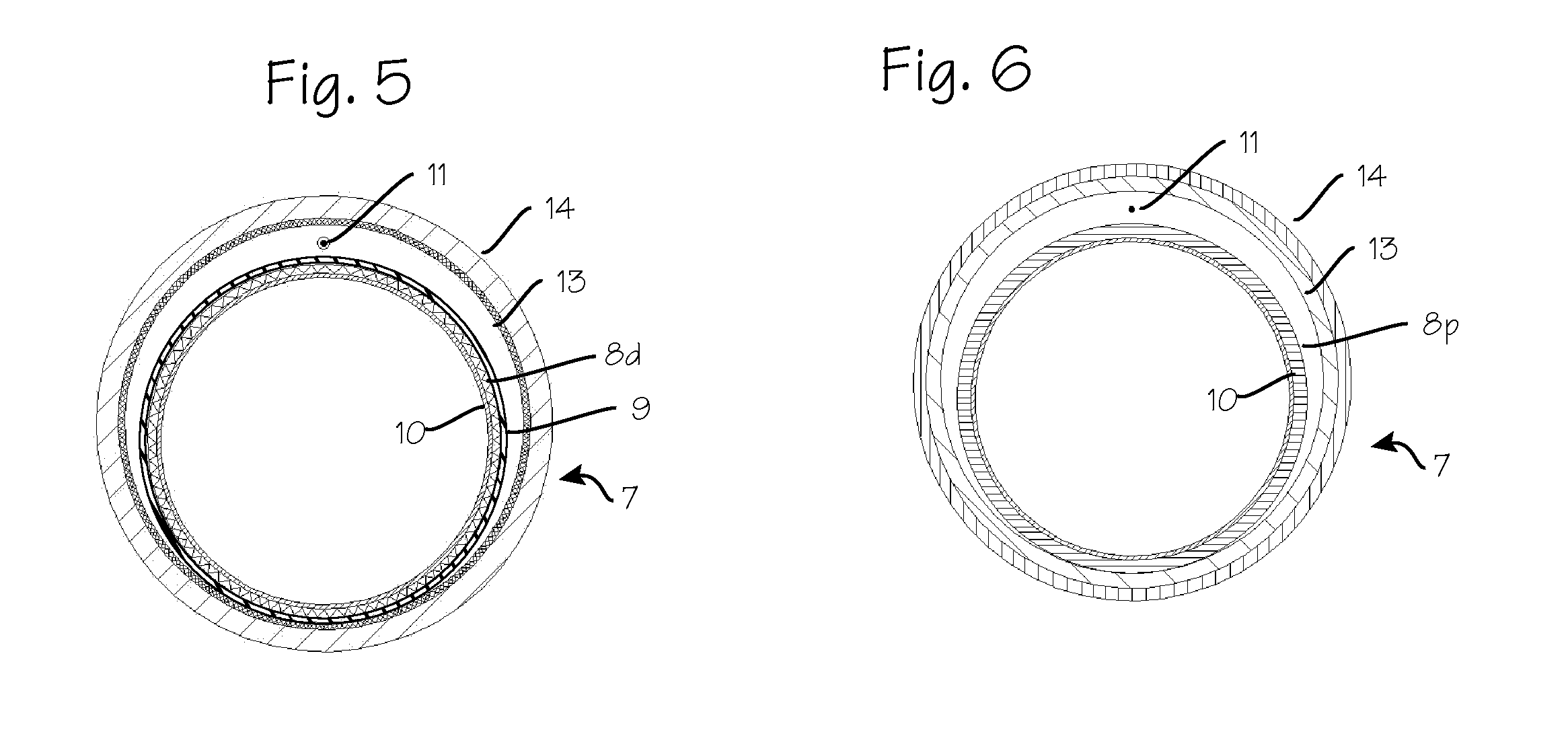Devices and Methods for Accessing the Vasculature of a Patient
- Summary
- Abstract
- Description
- Claims
- Application Information
AI Technical Summary
Benefits of technology
Problems solved by technology
Method used
Image
Examples
Embodiment Construction
[0036]FIG. 1 illustrates the deflectable guide catheter with the tip in its straight configuration. The guide catheter 1 comprises a steerable guide catheter tube 2 with a catheter handle 3 mounted on the proximal end 4 of the guide catheter tube. The distal end of the guide catheter tube includes a deflectable segment 5 which is operated by a pullwire via manipulation of a steering lever 6 on the proximal handle. As illustrated in FIG. 2, the deflectable segment is bent in an arc as the steering lever turned by the operator.
[0037]FIG. 3 is a cutaway view of the distal end of the deflectable guide in FIG. 1. As shown in FIG. 3, the deflectable segment of the guide catheter tube 2 is comprised of an outer catheter shaft 7 and a catheter inner tube 8, with a deflection tube 9 sandwiched between the two. A PTFE liner 10 is disposed within the catheter inner tube 8. That portion of the catheter inner tube 8 which resides inside the deflection tube (item 8d) comprises a coil covered with...
PUM
| Property | Measurement | Unit |
|---|---|---|
| Tension | aaaaa | aaaaa |
Abstract
Description
Claims
Application Information
 Login to View More
Login to View More - R&D
- Intellectual Property
- Life Sciences
- Materials
- Tech Scout
- Unparalleled Data Quality
- Higher Quality Content
- 60% Fewer Hallucinations
Browse by: Latest US Patents, China's latest patents, Technical Efficacy Thesaurus, Application Domain, Technology Topic, Popular Technical Reports.
© 2025 PatSnap. All rights reserved.Legal|Privacy policy|Modern Slavery Act Transparency Statement|Sitemap|About US| Contact US: help@patsnap.com



